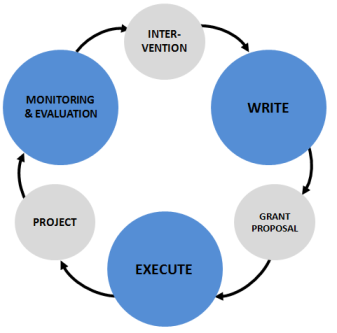The Trouble With “Failure” In the Nonprofit Sector

This post was originally published on RodneyFoxworth.com
I had the wonderful opportunity to speak at BmoreFail conference about failure and risk-taking in the nonprofit sector, a critically important topic that deserves increased attention and I’m hoping to continue the dialogue.
Having worked in the for-profit and not-for-profit sectors in my varied young professional career, I’ve concluded that both sectors make false assumptions and have misconceptions about the other. When I hear people suggest that nonprofits need to take more risk, I don’t often disagree, but typically these suggestions come from a point of view grounded in the for-profit experience, and it’s extremely difficult to apply even basic for-profit principles to the nonprofit sector; the sectors are structured quite differently. With this in mind, I was sensitive to use my talk as an educational opportunity regarding the sometimes stark differences between the sectors.
I titled my talk, “Why Nonprofits Fear Failure.” Catchy title, but do nonprofits actually fear failure? Yes and no. Nonprofit managers are nervous of failure primarily for two reasons: 1) failure has real human consequences, i.e. an untested, new intervention designed to reduce teenage pregnancies actually leads to increases in teenage pregnancies and 2) defunding of programs and services. Funding is a recurring theme for nonprofits; risk-taking and innovation largely go unfunded, so nonprofits are effectively discouraged from pursuing either.
But back to failure — nonprofits might fear it, but the nonprofit sector is rather failure tolerant. Baltimore, the social services city that it is and home to a robust nonprofit sector, has nearly 150,000 residents below the poverty line. Nearly 25 percents of Baltimoreans live in poverty. Now, this certainly isn’t the fault of nonprofits–there’s no shortage of blame to go around for Baltimore’s atrocious poverty figures–but we do know that many nonprofit poverty interventions either fail or have inconsequential impact.
So nonprofits fail. The question then becomes, how do nonprofits quickly assess impending failure and “pivot,” as tech entrepreneur and The Lean Startup author Eric Ries would frame it. But is the nonprofit sector even capable of implementing an idea birthed in the startup, technological community?
Sasha Dichter, chief innovation officer at Acumen Fund, attempts to answer that very question. He looks at Ries’ BUILD-MEASURE-LEARN cycle and retools it for the nonprofit sector, so we go from this:

To this:

Dichter surmises that,
The lightbulb moment for me is that we are structured as a sector to have a BUILD – MEASURE – LEARN cycle that lasts three years (sometimes longer)…the time it takes to get a grant, execute against that grant, write the grant report during and after the grant, and potentially renew. So the underlying problem isn’t about willingness to take risk, the underlying problem is the false premise that long cycle times make sense – when in fact as a sector we need new and better solutions nearly everywhere and need to create engines of innovation to get us there.
And there’s hope. While The Lean Startup was spreading throughout Silicon Valley and beyond, Mario Morino and Venture Philanthropy Partners have been busy evangelizing similar concepts put forth in Leap of Reason: Managing to Outcomes in an Era of Scarcity. It’s no surprise that Morino, a philanthropist who made his fortune as a highly successful software entrepreneur, might share similar principles with Ries. Morino cites a case where the Latin American Youth Center developed a program to discourage domestic violence perpetuated by Latino men. The center, through ongoing analysis and feedback, discovered that the program was actuallyvalidating the use of violence for these men. The center redesigned the program, leading to the desired outcomes: BUILD-MEASURE-LEARN and pivot.
Your Turn: Was your nonprofit organization ever at risk of failing? Did you have to pivot as a result? Please share below in the Comments section!
Want to learn more? Visit us here.
